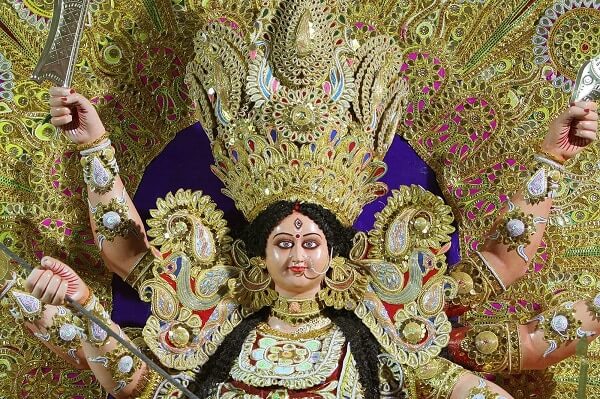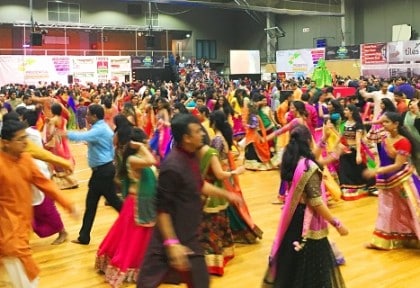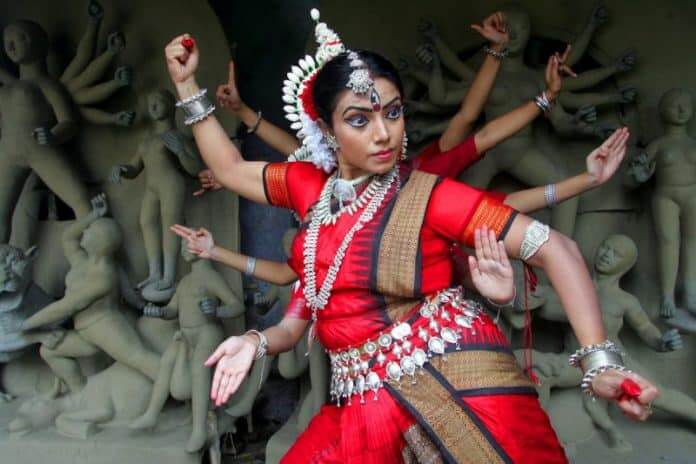It is that much-awaited last quarter of the year, finally. And heralding a season of celebration and thanksgiving is the festival of Navratri and Dussehra. It is the time for bonfires in the north, dandiya in the west, community street festivals in the east and kolu in the south. Navratri (literally, nine nights) celebrates the victory of good over evil, light over darkness and chaos. But more than anything else, it is the celebration of woman power – Shakti, or the female principle of Nature.
She represents Prakriti, the counterpart of Purusha, jointly making possible the creation of the world. They represent the benign power dormant within, imbibing us with their spiritual energy and power. The worship of the divine mother was prevalent in India even before Vedic times.
Navratri festivities are thus dedicated to Parvati, Lakshmi and Saraswati – the three feminine icons of Hinduism, symbolising power, wealth and knowledge. It commences with Amavasya (new moon day) in the Hindu month of Bhadrapada, on the last day of Pitrapaksha, which is a fortnight of austerity in remembrance of forefathers.
So how did Navratri come into being?
According to Hindu scriptures, the demon Mahishasura wreaked havoc on the earth after he was endowed with power by the blessing of Lord Shiva, whereby no man or God could end his life. Troubled by such an outcome, the Gods invoked goddess Durga as their saviour.
Durga, an incarnation of Parvati, rides a lion, and armed with the shul (pike), chakra (wheel), parshu (axe) and talvar (sword), wages a nine day-long battle against the near-invincible demon.
READ ALSO: Durga Puja: Linking Kolkata with the rest of the world

The first three days of Navratri are dedicated to Maa Durga, the Goddess of power and energy.
Her various manifestations, Kumari, Parvati and Kali, are all worshipped during these days.
They represent the three different stages of womanhood – child, adolescent and woman. During the next three days, Lakshmi, the goddess of wealth, peace and prosperity is worshipped.
The last three days celebrate Saraswati, the goddess of wisdom, who is worshipped to acquire the spiritual knowledge. This in turn will free us from all earthly bondage or samsara.
The tenth day, known as Vijaya Dasami or Dussehra, is of immense mythological significance. It is believed that Rama performed chandi-puja (holy prayer) on this day. This was carried out in order to invoke the blessings of Durga to defeat the ten-headed demon king Ravana.
It is now widely accepted that any new venture started on Dussehra will bear the fruits of success.
Today, this celebration of woman power has taken on a socio-cultural aspect. Navratri also means different things to various ethnic groups in India, though the ideology behind it is the same.
READ ALSO: 10 Bollywood Garba songs for Navratri 2020

One such is garba, Gujarat’s popular folk dance, where dancers move around a mandvi, a structure to hold earthen lamps filled with water and to house the image or idol of a goddess. A betel nut and a silver coin are placed within the pot, called a kumbh, on top of which a coconut has also been placed. Pandals are erected over these mandvis and decorated with asopalav, date palm leaves, flowers and electric light. As the dancers whirl around the pot, a singer and a drummer provide the musical accompaniment.
Another dance which is also a feature of Navaratri is the dandia ras or ‘stick’ dance, in which men and women join the dance circle, holding small polished sticks or dandias. As they whirl to the intoxicating rhythm of the dance, men and women strike the dandias together, adding to the joyous atmosphere.
In the south, Navratri includes kolu, or doll display, in complex multi-tiered arrangements. Women visit each other and exchange flowers, vermillion and betel nuts.
The tradition has been in existence for at least 500 years, from the reign of the Vijayanagar kings. Some of the inscriptions mention the Navaratri kolu. An old Marathi record at the Saraswathi Mahal library (Thanjavur) mentions the supply of dolls representing people belonging to 18 different castes for the Navaratri kolu. The kolu tradition, it is believed, was popular among the royal families of Thanjavur and Pudukkottai. This tradition is common in a number of Asian countries too. The Japanese version of our Navaratri kolu is known as Hina Masturi.
In Bengal, Durga Puja is marked by elaborate road-side pandals with the deities taking on many new avatars. Made painstakingly with clay, specialist artisans pour in their labour of love and spend many months to prepare for these nine memorable days. The festival reaches a crescendo with Maha Saptami. Crowds throng to the pandals to offer anjoli or prayers to goddess Durga.
In the north, Ram Leela and the burning of Ravana’s effigy marks their way of celebrating Navratri.
Link up with us!
Indian Link News website: Save our website as a bookmark
Indian Link E-Newsletter: Subscribe to our weekly e-newsletter
Indian Link Newspaper: Click here to read our e-paper
Indian Link app: Download our app from Apple’s App Store or Google Play and subscribe to the alerts
Facebook: facebook.com/IndianLinkAustralia
Twitter: @indian_link
Instagram: @indianlink
LinkedIn: linkedin.com/IndianLinkMediaGroup





